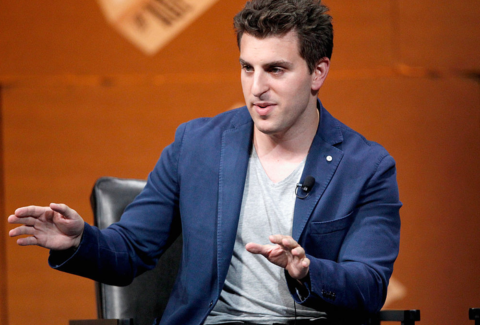Decoding the skills of Shekhar Gupta: India’s best news storyteller
When did you start following the Indian journalist Shekhar Gupta?
Hopefully your answer isn’t – “Who Shekhar Gupta?”. If so, then let me introduce you to India’s finest news storyteller.
On the other hand, if you, like many others, have started following him through his incredibly popular ‘Cut the Clutter‘ series on YouTube, you might be thinking…
“Man, this guy has become an overnight success!”
Like most other ‘overnight successes’, however, it’s been one that’s 40+ years in the making.
Shekhar Gupta began reporting in 1977… and is rightfully one of the foremost journalists of our country today.
In this post, I decode what makes him the brilliant storyteller he is.
From writing… to tweets and to videos
I would occasionally read Shekhar Gupta’s columns in the 1990s and 2000s. But I started appreciating the real import of his work only in the early 2010s.
At that time I would eagerly await his weekly ‘National Interest‘ columns in The Indian Express (I still await them on The Print website now).
I also enjoyed his ‘Writings on the Wall‘ series which would cover various election campaigns and try to decipher the on-ground situation, by literally reading the ‘writings on the walls’ of the towns and villages where elections were being held.
I remember, in one of those articles where he was covering an upcoming election in Maharashtra, someone in a Mumbai slum asked him “What’s your Twitter handle?”
Shockingly, Gupta was not on Twitter then! By media industry’s standards, he started quite late, in June 2014. But he quickly made up for lost time… and now has 2.4M followers!
Even then, Gupta’s following was still limited to those who would read. Next, he parlayed his skills into the medium that works best for mass communication: video.
You might think Shekhar Gupta has been doing explanatory videos forever… but the first edition of ‘Cut the Clutter’ was launched as recently as 19-Sep-2018 – less than 3 years ago.
In these three years, the series has become a strong brand, serving a vast audience hungry for good explanatory content, with more than 1.6M subscribers and 815 episodes, with many getting several hundred-thousand views.
By the way, 815 episodes since 2018 makes it 5 episodes every week, or one episode every working day! You have to admire that kind of effort.
But more than the quantum, what appeals to me is the quality of analysis and storytelling.
Specifically, I find three key differentiators that make Shekhar Gupta so good across all his storytelling.
Three differentiators: Better data, better narratives and better story engagement tools
1. Better data
There’s a line I remember in a restaurant ad I came across once. It went: ‘The search for the perfect dish ends with the right ingredients”
Data – especially surprising, exclusive, tough to acquire facts – are the core ingredient that make a compelling story.
Shekhar Gupta excels in his ability to understand what is the right data needed for a particular topic and then takes herculean efforts to get it.
As a journalist that means:
- He actually goes out into the field: A lot of ‘opinion writers’ are just that – opinion writers. They base their write-ups on secondary research and perhaps some calls. But there is no substitute for hard, on-the-ground physical presence. In his Writings on the wall series, Gupta would actually travel to the deep interiors of the country to gauge the on-ground situation by speaking to people from different walks of life.
- He speaks to key leaders: One of Gupta’s USPs is his access to the top leaders – across government, business, entertainment and sports. Apart from his famous ‘Walk the Talk‘ interview series on NDTV, he conducts an arresting series of video interviews called ‘Off the Cuff‘. I had really liked this episode with Sanjeev Sanyal, Principal Economic Adviser, Ministry of Finance, India. These interviews add to the quality of his data inputs.
- He’s built an organisation of reporters: As founder of The Print, he has built a strong base of reporters across geographies and sectors. He’s also generous in giving them bylines and airtime in sharing their findings.
Overall, the great ingredients make for a great dish. Having said that, there’s one clear area of improvement – on the hard ‘data’ front, especially the use of statistical analysis.
In research and consulting terms, Gupta is fabulous in ‘Primary research’, but does not do enough ‘secondary research’, especially detailed analysis and number crunching of statistics.
2. Better narrative
Your data might be solid and exclusive, but it needs to be woven together in a clear narrative. Here’s how Shekhar Gupta excels in this aspect:
- Connects the dots: Very few journalists can boast of 40+ years of rich, eventful experience combined with a keen observational eye. With this context, no news item is an isolated one for Gupta. He is able to connect current events and discern insightful patterns. For instance, take this awful incident of the casteist attack on Indian women’s hockey star Vandana Katariya’s house… Shekhar Gupta converts it into a fascinating narrative of the historically inclusive nature of the Indian hockey teams (men and women’s), especially in contrast to its richer cousin, cricket.
- Provides historical perspective: Gupta is a keen student of history… and in most of his writings/videos, you will get rich historical context into present-day events. For example, this one on the current Afghan crisis recounts the events from the British occupation times… and in this video check out the fascinating tidbit (starts at around 16:40) about the US Senator Charlie Wilson’s desire to down a Soviet helicopter with a shoulder-mounted gun (more context: check out this arresting movie – Charlie Wilson’s War on the topic).
- Non-hyphenated journalism: Any narrative on politics in today’s extremely polarised times suffers from one issue – allegations of bias. Journalists in India, especially, are branded as either as ‘Sanghi’ or ‘Pseudo-sickular’ (among other colourful names). To his massive credit, Shekhar Gupta has avoided these labels (even branding himself as ‘non-hyphenated’) and is equally critical (and when due, appreciative) of politicians from all parties. It remains an incredibly tough balancing act. One interesting measure of success? He gets abuse from all sides of the political spectrum.
- Writes things down: This is a small tactical aspect to Gupta’s work – he doesn’t just reel off the story off the top of his head. He writes it down. You can see him referring to several pages of notes during his ‘Cut the Clutter’ videos.
3. Better Engagement tools
Having robust data and a clear narrative sets up a strong foundation for the story.
But what makes it engaging and fun to read (or watch) are the story engagement tools that are added. Compared to other journalists and opinion writers, this is one massive differentiator for Shekhar Gupta. Here are a few of the engagement tools that I’ve seen him use:
- Personal anecdotes: These are my favourites. Sure, his seniority and experience afford him access to elusive senior leaders. But where Gupta excels is in capturing remarkable little incidents from his interactions with these leaders and incorporating them into his narrative. Check out this fascinating video where he talks about the four occasions when he was admonished by ex-Prime Minister, Atal Bihari Vajpayee.
- Analogies: Indian writing has always been rich in metaphors and analogies (going back to our Sanskrit epics). Gupta carries forward that tradition – for instance check out this post using the analogy of an Ashwamedha Yagna for the BJP’s rise across states in India, right down to the use of the ‘sacrificial horse’.
- Aphorisms, couplets etc.: I love Gupta’s use of simple heartland aphorisms, famous lines/couplets and sometimes even Bollywood lyrics to explain complex events. For instance, this striking example from a piece on Indo-US strategic relations where Gupta writes: “In Goswami Tulsidas’s Ramcharitmanas, an irate Lord Ram lays down an important principle in all relationships, whether among human beings or nations. ‘Bin bhay hote na preet (nobody loves you unless they fear you)’… It is that ‘bhay’, the fear of a rampant China, that is bringing these powers together, tossing all diplomatic reserve. In my more facetious moments, which are prolific, I would even describe the Quad as the ‘Cheen Peedit Samaj’.”
- Cheeky humour: In the post on the ‘Ashwamedha Yagna’ mentioned above, he refers to how the present day BJP has become a dominant party across the nation – something that was the dream of its early leaders like LK Advani. Here’s how Gupta cheekily concludes the article: “In 1998, (Advani) launched the campaign to transform Indian politics. Within his lifetime, his pupils (Modi and Shah) have redeemed his pledge. If not wholly or in full measure, but very substantially. Sorry, Nehru fans, for stealing this from him.” (For the uninitiated, that line was inspired by Nehru’s famous Tryst with destiny speech)
- …And one last thing: To combat the tendency of viewers to leave videos midway, Gupta uses a smart ‘curiosity play’ tactic. Often in the middle of the video, he would say something like “And why has this happened? I will come to that in sometime…but before that let’s look at…“. This smart ‘stay-till-the-end-to-close-this-loop-that-I-just-opened-in-your-mind’ technique ensures that the audience actually watches the entire video.
Finally, would like to end with a quote by Neil Gaiman on Douglas Adams:
“I think perhaps… Douglas was a futurologist, or an explainer. One day maybe we’ll realise that the most important job there is, is someone who can explain the world to itself in ways the world can’t forget”
Shekhar Gupta is someone who can explain India to us in ways we cannot forget.







